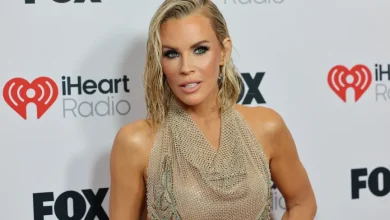Bill Clinton’s Health Scare? Former President, 79, Leaves Hamptons with Hillary and Defibrillator

In recent weeks, the spotlight has turned once again toward Bill Clinton, the 42nd President of the United States. At 79, Clinton is no stranger to the scrutiny that comes with both political life and personal challenges. But this time, the headlines are not about his policies or public speeches—they’re about his health.
Reports surfaced that the former President left the Hamptons, accompanied by former First Lady Hillary Clinton, with a defibrillator in tow. The sight of the Clintons leaving quietly yet deliberately sparked questions: Is Bill Clinton facing a serious health scare? What does this mean for a man who has long battled heart-related health issues? And how does it serve as a wake-up call for millions of Americans about the importance of proactive healthcare and lifestyle adjustments?
Bill Clinton’s recent health challenges but also the broader context of aging, heart health, prevention, and how public figures shape the national conversation around health.
Bill Clinton’s Long Battle with Health Issues
Bill Clinton has always been candid about his health struggles. His battle with heart disease began decades ago, culminating in quadruple bypass surgery in 2004 after experiencing chest pains and shortness of breath. Doctors later revealed that his arteries were more severely blocked than initially thought, which put him at high risk of a life-threatening cardiac event.
In 2010, Clinton underwent another surgical procedure to insert two coronary stents after one of his arteries became clogged again. The incident was a stark reminder that heart disease is a chronic battle, even for someone who once held the most powerful office in the world.
Clinton himself has admitted that his diet and lifestyle contributed to his health problems. Known in his presidential years for enjoying fast food, he later transformed his habits by adopting a plant-based diet and incorporating regular exercise into his daily routine.
But as recent events suggest, even with these changes, the fight for long-term health never truly ends—especially when age becomes a factor.
Hillary Clinton’s Role in His Health Journey
Behind every public figure facing health challenges is often a supportive partner. Hillary Clinton has stood by Bill through decades of political storms and personal struggles, and his health is no different.
Sources close to the couple indicate that Hillary has been a constant advocate for healthier living in their household. She has encouraged Bill’s plant-based lifestyle and often accompanies him on walks, ensuring he keeps moving and stays active.
The image of the two leaving the Hamptons together was symbolic: not only as partners in politics but as lifelong partners in health, navigating the uncertainties of aging with shared strength.
Why the Defibrillator Matters
The presence of a defibrillator during Clinton’s Hamptons departure raised eyebrows. Defibrillators are not everyday carry items—they are devices used to correct dangerous heart rhythms and restore normal heartbeat during cardiac emergencies.
For someone with a history of cardiovascular health issues, carrying a defibrillator can be both a precaution and a sign of elevated risk. It reflects medical preparedness but also underscores the seriousness of his condition.
Medical experts note that many patients with prior heart surgeries are advised to keep close access to such devices, particularly when traveling. The fact that Clinton has one at hand suggests his doctors are taking no chances.
Health Scares in Former Presidents: Not an Isolated Case
Bill Clinton is not the first former U.S. President to face health scares in the public eye. History reminds us that presidents are human, and their health battles often mirror the struggles of ordinary citizens:
- Dwight Eisenhower suffered multiple heart attacks during his presidency.
- Ronald Reagan battled Alzheimer’s disease in his later years.
- George H.W. Bush dealt with Parkinson’s-like symptoms.
These high-profile cases highlight the importance of health management, especially under the weight of stress, age, and public expectation.
What Clinton’s Health Scare Teaches Us About Heart Health
Clinton’s story is more than just headline fodder—it’s a reminder of what millions face every day: the ongoing fight against heart disease, one of the leading causes of death worldwide. His public journey offers lessons that apply to everyone:
- Early Intervention Matters – Clinton’s bypass surgery in 2004 likely saved his life. Regular check-ups and listening to early warning signs are critical.
- Lifestyle Changes Can Transform Health – His shift to a plant-based diet demonstrates that choices matter. Reducing red meat, fried foods, and sugar can drastically lower cardiovascular risks.
- Aging Requires Adaptation – Health needs change with age. What worked at 50 may not suffice at 79. Ongoing medical guidance is essential.
- Preparedness Saves Lives – The defibrillator underscores the need for readiness in emergencies, especially for those with a history of heart problems.
America’s Silent Epidemic: Heart Disease
Clinton’s health scare comes against the backdrop of a national crisis: heart disease remains the number one killer in America. According to the CDC, nearly 700,000 Americans die from heart disease each year, accounting for 1 in 5 deaths.
The statistics are alarming, but they reflect a larger reality: unhealthy diets, sedentary lifestyles, and rising obesity rates have made heart disease a pervasive issue. Clinton’s story forces the public to confront this epidemic, putting a familiar face to an often-overlooked crisis.
The Role of Stress in Presidential Health
Few jobs are as stressful as being President of the United States. Decisions that impact millions weigh heavily, and the relentless scrutiny of public life takes its toll. Research consistently shows that stress contributes to heart disease, hypertension, and other chronic conditions.
Bill Clinton’s presidency was marked by political battles, global challenges, and personal controversies—all of which compounded stress. While he has been out of office for decades, the long-term effects of such pressure on his health cannot be overlooked.
Celebrity and the Public Health Conversation
When public figures like Clinton face health scares, it often sparks renewed public attention to health issues. Just as Michael J. Fox raised awareness for Parkinson’s disease and Angelina Jolie shed light on genetic cancer risks, Clinton’s openness about his health can inspire others to take proactive steps.
His health journey has already influenced many to reconsider their diets, exercise routines, and medical checkups. It’s a powerful reminder that health is universal, transcending status, wealth, or power.
The Clinton Family’s Resilience
Bill and Hillary Clinton have weathered political storms, personal challenges, and now health uncertainties. Their resilience serves as an inspiration to many. For the Clintons, health is not merely a personal journey but a shared commitment.
Their public appearances, even amid health concerns, send a clear message: life does not end with a diagnosis. It continues—with adjustments, precautions, and perseverance.
Looking Ahead: What This Could Mean
While speculation about Clinton’s health will continue, what matters most is the broader conversation it has ignited. Americans are once again reminded of the fragility of health and the importance of prevention.
For Clinton, the future may hold more health battles, but with careful monitoring, lifestyle management, and medical advances, he continues to live a full, impactful life.
For the public, his story is a wake-up call. It’s time to pay closer attention to personal health, invest in prevention, and embrace lifestyle changes that can add years to life—and life to years.
Practical Health Tips Inspired by Bill Clinton’s Journey
If Clinton’s health journey has inspired you, here are actionable steps to take today:
- Schedule regular check-ups – Don’t wait for symptoms to appear. Prevention is better than cure.
- Adopt a heart-healthy diet – Focus on fruits, vegetables, whole grains, and lean proteins. Limit processed and fried foods.
- Stay active – Even walking 30 minutes daily can dramatically reduce cardiovascular risks.
- Manage stress – Practice mindfulness, meditation, or simple breathing exercises.
- Know your family history – Genetics play a role, so awareness helps guide preventive measures.
- Don’t ignore warning signs – Chest pain, fatigue, or shortness of breath should never be dismissed.
- Be prepared – Just as Clinton keeps a defibrillator nearby, those with high risk should have emergency plans in place.
Conclusion: Health Is the True Legacy
At 79, Bill Clinton’s legacy goes far beyond politics. His health struggles, triumphs, and scares have created a narrative that millions can relate to. His story is not about weakness but about resilience—a reminder that health is the most important foundation of a meaningful life.
As Clinton and Hillary continue their journey, the world watches not just a former president but a fellow human being navigating the complexities of aging and illness. In that reflection, we see ourselves, our loved ones, and the universal truth: health is wealth, and without it, nothing else truly matters.




